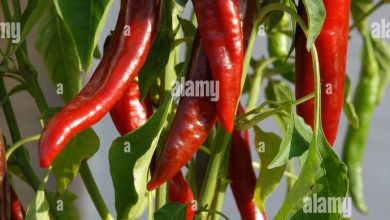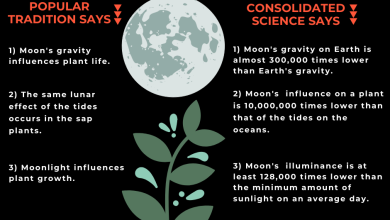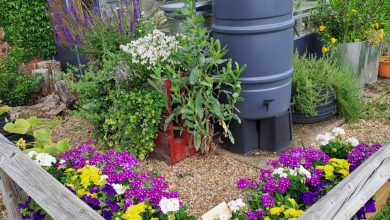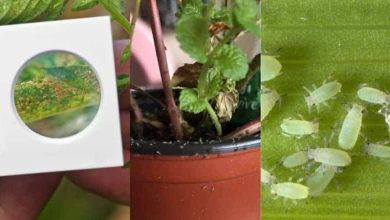The Guide to Learn How to Plant Lettuce Successfully [12 Steps]
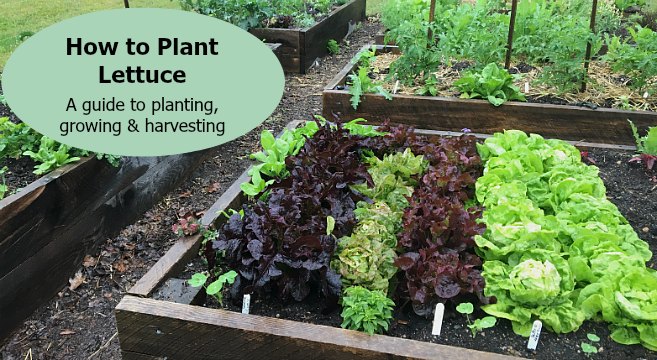
She is probably the queen of salads.
And you probably got here becauseyou want to learn how to plant it.
His name is:Lettuce.
I have good news: growing it is not complicated. You need:
- Much water.
- Sun.
- Potting soil.
With this andabout two monthsYou can have your own lettuces in the salad.Free of chemicals and other substances.
Also, lettuces are fast-growing plants.
Take a look at the article and see for yourself
Plant lettuce step by step:
- When? Any time of the year depending on the variety. In general we prefer the end of September.
- Where? Place that gives sunlight. In dry summers we want to be able to have shade.
- Harvest time? About 50 days.

- How do we prepare the land? The soil must be rich in humus and highly decomposed organic material.
- What should we avoid? Dryness. The large leaves of lettuce require a good dose of water daily.
- How do we pay? With compost, organic material or manure. But it is important that it is very decomposed.
- Before sowing? We prepare two lines and stir the soil well.
- How deep? At 2cm and leave 30cm between the sown seeds.
- How do we water? Ideal drip irrigation. Little, constant and daily. We will avoid flooding.
- When do we collect? When the leaves are large.
- What do we sow with them? Any association is good. We highlight carrots, garlic, onions, Swiss chard, nasturtium and spinach.
- What enemies does he have? Snails, birds, rot, drought and aphids.
It would be very strange that you would not know the lettuce. This plant is tremendously used at a culinary level in most cultures.
In fact, in France they do not distinguish between the name they give to the salad and the name they give to the lettuce.
We know that they are similar to other lesser-known plants, such as escaroles or spinach. However, lettuce is much better known and used.
In Spain we have planted lettuce throughout history. However, we chose a certain type of lettuce: large, crisp and sweet. Foreign tourists brought with them diverse demands, and for this reason, in a few years we have implemented other types of lettuce.
 There are many types of lettuce, but what we must know is that it is a plant that was not like that when it was wild. Lettuce, in nature, is usually small and bitter. The human being has adapted it, making it tasty and large.
There are many types of lettuce, but what we must know is that it is a plant that was not like that when it was wild. Lettuce, in nature, is usually small and bitter. The human being has adapted it, making it tasty and large.
We are interested in learning how to plant lettuce because today it is in all supermarkets, but it receives a huge amount of chemicals to reduce attacks by pests (such as slugs) or to increase the size and speed with which it grows.
For this reason and taking into account that due to the variety and harvest time, we can have lettuce throughout the year, we are interested in planting it in our own garden.
What properties can we find in lettuce?
Lettuces are a type of leafy vegetables.
numerous. Among them we will highlight the following:
- Calming, purifying, refreshing properties.
- Vitamins A, B1, B2, B6, C, D and E.
- Minerals such as copper, chlorine, phosphorus, magnesium, potassium, iron, and sodium.
Lettuces are also excellent sedatives. Therefore, its use is recommended for those who suffer from insomnia.
Where do we plant them?
Lettuces are adapted to most climates. However, they prefer temperatures that are not too high. Its large leaves cause them to dehydrate easily.
In case of high temperatures it could be interesting to give them some shade.
Excessive irrigation or rain in its final phase of growth can very easily produce rot.
Curious fact:To take advantage of all its nutritional attributes, it is important to consume lettuce leaves when they are darker in color. White leaves have a lower chlorophyll content, which means they have fewer nutrients.
How do we prepare the soil?
Like spinach, Swiss chard or lamb’s lettuce, lettuce should be planted in soil rich in highly decomposed organic matter and rich in humus.
We will take advantage of soils in which we have grown other vegetables, such as tomatoes, potatoes, peppers and carrots.
We will look for a soil that is capable of retaining moisture well.
How do we pay?
As we have mentioned before, lettuce does not need an excessively fertilized soil. The remains of previous plantations are usually enough.
However, in case of poor soil, we can resort to homemade organic matter such as highly decomposed compost. We can spread about 3kg every square meter. We will add half, that is, 1.5kg during the development of the lettuce.
How do we water?
 We must know that if we want to plant lettuce one of the most important points is the large amount of water they require. Mainly when the buds are forming.
We must know that if we want to plant lettuce one of the most important points is the large amount of water they require. Mainly when the buds are forming.
The ideal irrigation system will be drip irrigation. Lettuces require soil that is constantly moist. So we will water daily and in small quantities. We rule out the risks that flood the lettuce crop, since rotting is more than assured.
In the initial phases we could use sprinkler irrigation, however it is not advisable once the lettuce buds gain strength and are large. Since they will also cause rot and attract enemies such as slugs more easily.
How do we plant them?
We can plant lettuce throughout the year.
Like other cousins such as spinach or Swiss chard, we will make two lines and bury several seeds (two or three) about 2cm apart. We will leave a distance of about 30cm between each of the buried seeds.
Lettuce is a plant that grows quickly and easily. Once the lettuces are growing, we can clarify them (ready to consume) and thus facilitate harvesting.
harvest and gathering
Depending on the variety, we will be able to harvest the lettuce from our garden in approximately 50 days.
The good thing about lettuce is that after being harvested, it grows back repeatedly. The important thing is NOT TO CUT the main stem. You must keep this one without being harvested, since this would practically end our lettuce.
You should cut and harvest the secondary lettuce stems, not the main one.
Planting lettuce is relatively simple. The important thing is to provide them with continuous irrigation, ensure that the soil is rich in humus and prevent their enemies from approaching.
We must also eliminate the herbs that appear around as a result of having a moist and constant soil. For this we will use a small hoe or shovel and we will remove them as they come out.
What enemies does lettuce have?
 The main enemies of lettuce are slugs (such as snails), birds, rot due to excess moisture and dryness.
The main enemies of lettuce are slugs (such as snails), birds, rot due to excess moisture and dryness.
We could also find aphids. We can combat them with garlic and chillies.
Against the birds we can resort to a mesh that covers the lettuce. This mesh must not be attached to the plantation, but there must be a space, so that the birds do not arrive.
To know more, read: Lettuce varieties.

